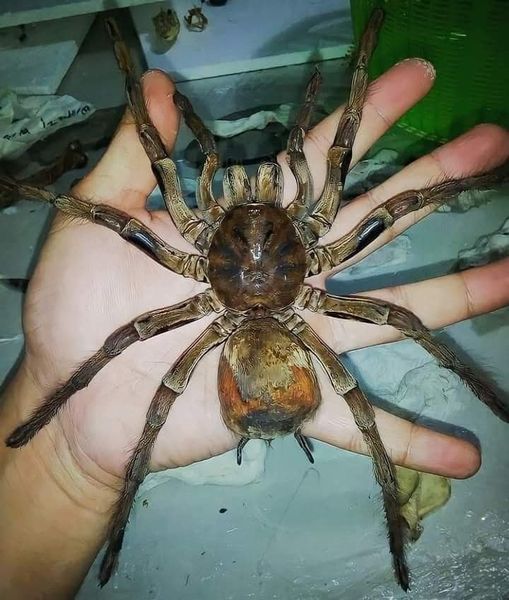By- Vinuri Randhulla Silva,
The Goliath birdeater (Theraphosa blondi) belongs to the tarantula family Theraphosidae. Found in northern South America, it is the largest spider in the world by mass (175 g (6.2 oz)) and body length (up to 13 cm (5.1 in), and second to the giant huntsman spider by leg span. It is also called the Goliath tarantula or Goliath bird-eating spider; the practice of calling theraphosids "bird-eating" derives from an early 18th-century copper engraving by Maria Sibylla Merian that shows one eating a hummingbird. Despite the spider's name, it rarely preys on birds.
These spiders can have a leg span up to 30 cm
(12 in), a body length of up to 13 cm (5.1 in) and
can weigh up to 175 g (6.2 oz). Bird eaters are one of
the few tarantula species that lack tibial spurs, located on the first pair of
legs of most adult males. They are mostly tan to light brown and golden-hued.
Unlike other species of spider/tarantula, females do not eat the males during mating. Females mature in 3–6 years and have an average
lifespan of 15 to 25 years. Males die soon after maturity and have a lifespan
of three to six years. Colors range from dark to light brown with faint
markings on the legs. Bird-eaters have hair on their bodies, abdomens, and
legs. The female lays 100 to 200 eggs, which hatch into spiderling within 6–8
weeks.
The Goliath bird eater is native to the upland rain
forest regions of Northern
South America: Suriname, Guyana, French
Guiana, northern Brazil, and southern Venezuela. Most noticeable in the Amazon
rainforest, the spider is terrestrial, living in deep burrows, and is
found commonly in marshy or swampy areas. It is a nocturnal species.
Reference
World's biggest spider face-off - see which bug wins here Archived October
23, 2014, at the Wayback Machine

Comments
Post a Comment